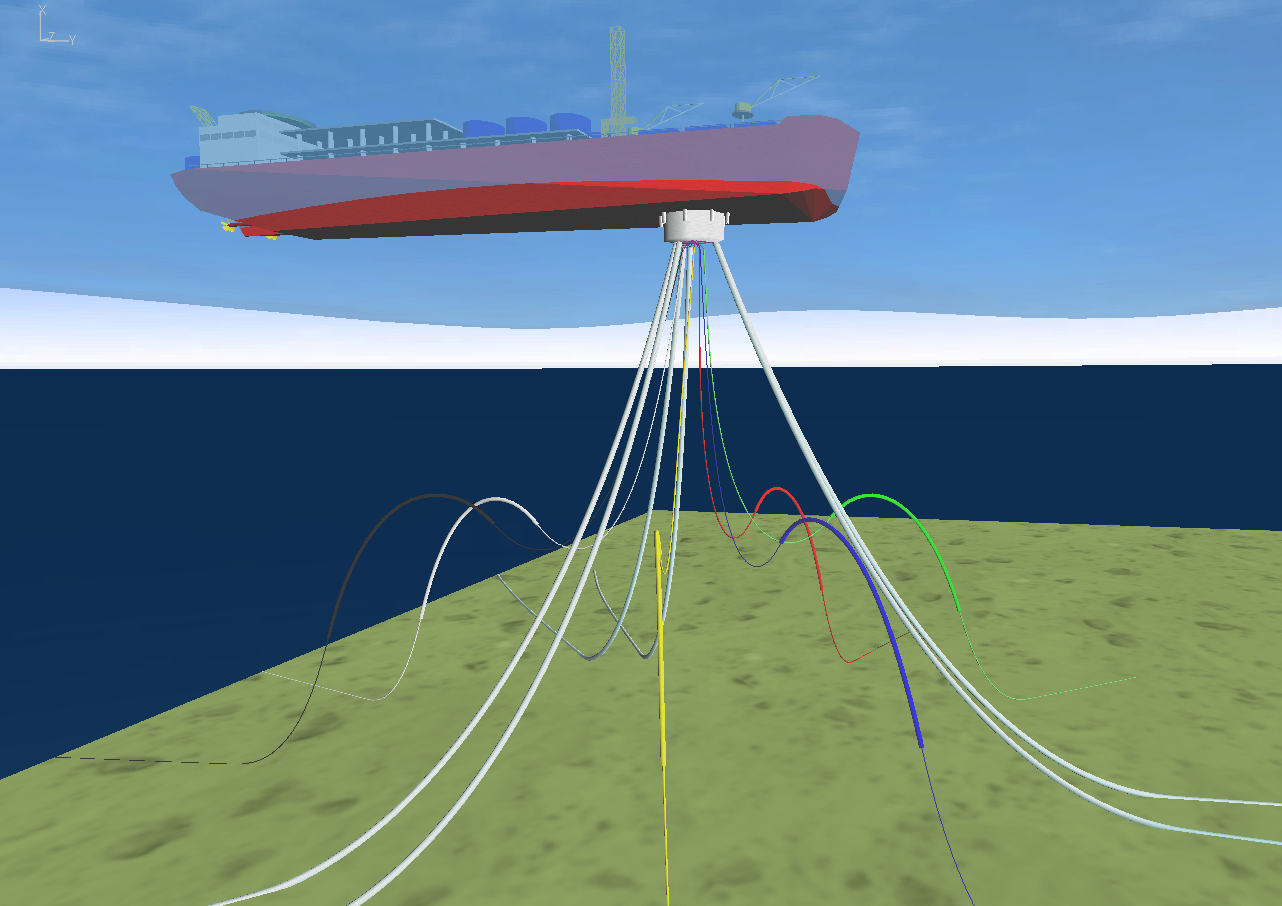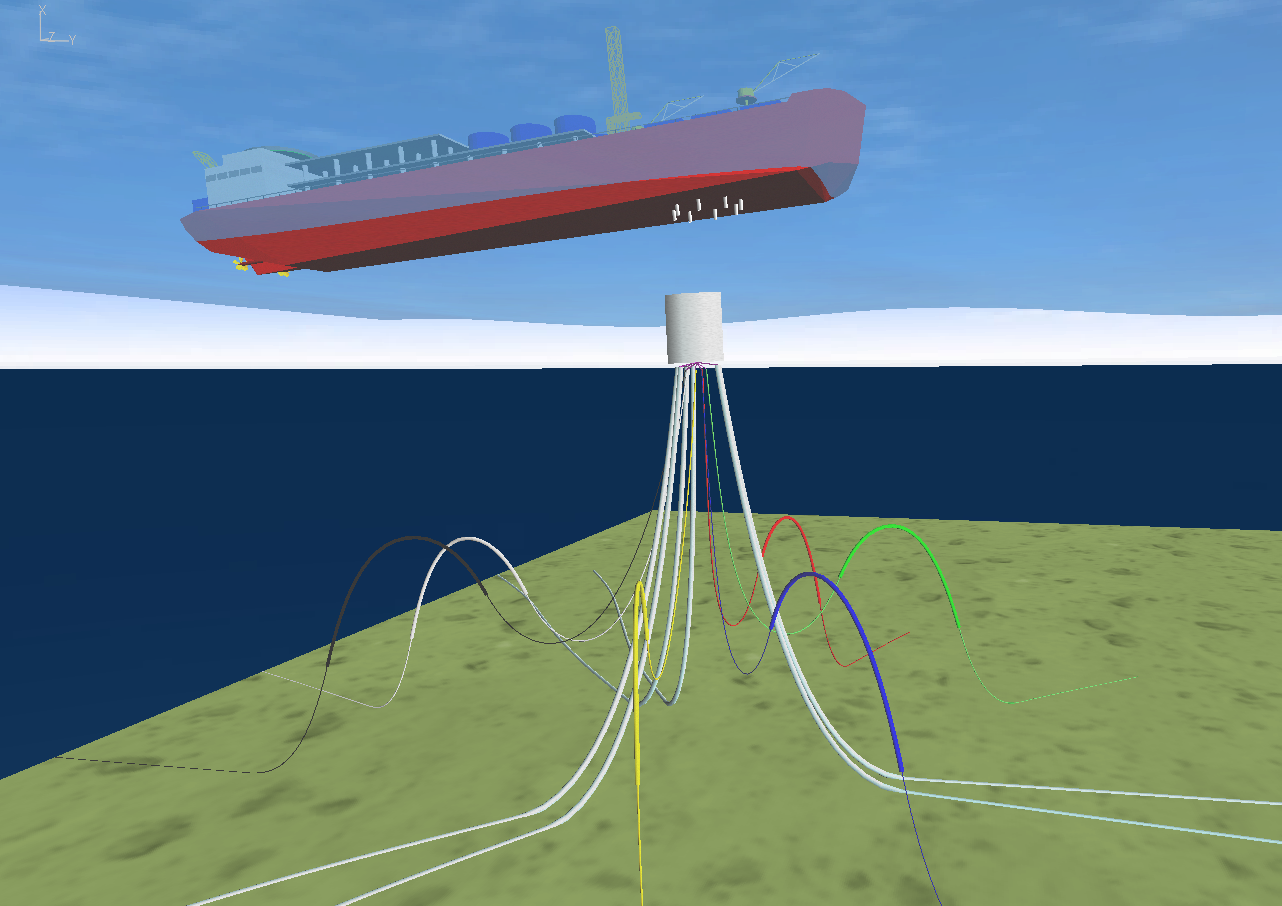This example considers an internal turret moored FPSO and examines a turret disconnect scenario. The turret, integrated towards the bow of the vessel, allows to vessel to weathervane into the prevailing environment. Additionally, the turret is disconnectable as this design allows the vessel to disconnect from the turret in inclement weather, such as an approaching iceberg, or for service of the FPSO. This model includes the vessel, turret cage, and buoy, which is comprised of 6 chain mooring lines, 2 production risers, 2 injection risers, an umbilical, and 1 gas lift line.
The analysis is performed in two phases. In the first phase, the buoy is connected to the vessel and subjected to wave and current loading. In the second phase of the analysis, the buoy is released from the vessel and is allowed to fall out of the moonpool of the vessel as it continues to be subjected to wave and current loading.
This example illustrates several features in Flexcom which allow for the ease of model set up and show how investing time in the initial set up of parameters can lead to significant time saving changes during any future alterations to the model. Additionally, such a model setup is also very conducive to quality assurance.
The connected and disconnect configurations are shown in the respective figures below.

Spider Buoy Connected Configuration

Spider Buoy Disconnected Configuration